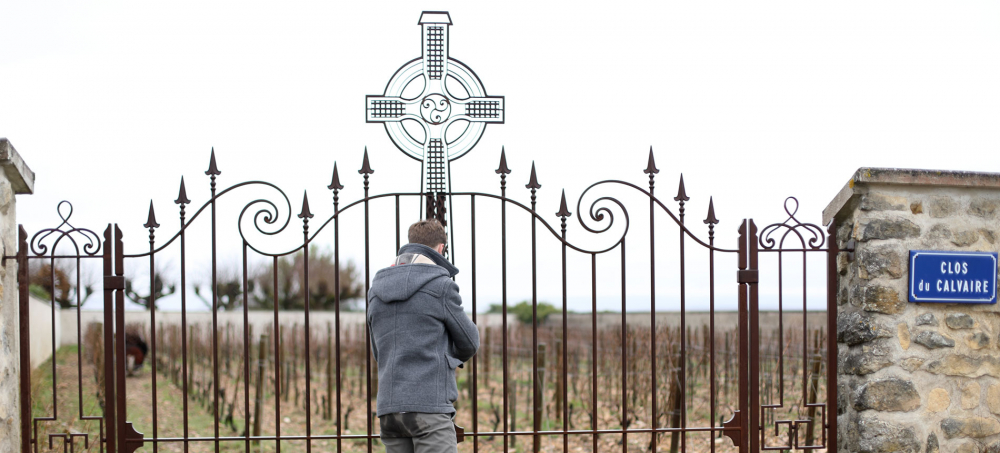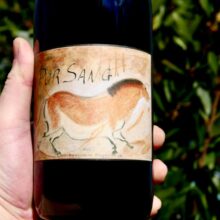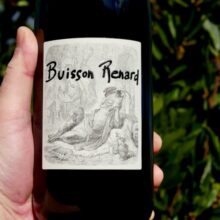
Winery
Domaine Didier Dagueneau
About Domaine Didier Dagueneau
Initially vilified by his peers, he was eventually revered for his success. Dagueneau tragically passed away in a light plane crash in September 2008. His son is now in charge of the Domaine and continues to uphold his father’s remarkable legacy.
Jefford’s commentary sums it up beautifully.
“His wines smelled not of Sauvignon Blanc … but of……Spring. Sipping the Buisson Renard was like standing beneath a waterfall: the flavours were clean, limpid eerily palpable, a soft shock. The silex was not the parody flintlock of popular myth; it was pure, sappy, soaring, rich, finishing with just a hint of stone after rain. I had not been expecting this calm and majestic retreat from the varietal. I learnt something new.”
If there were any doubts surrounding the succession of this remarkable Estate, they have been emphatically quashed by the recent releases under the stewardship of Louis-Benjamin. On a recent visit Benjamin spoke of the ‘well oiled’ Estate he had inherited. “We have been experimenting here for 25 years in every area—vineyard management, winemaking, types of oak, time on lees—every single detail has been closely looked at, to establish precisely how we could produce the greatest possible wines from our soils. Today we know what we are doing. We are still progressing, and every year is different, but now any changes are at the margins.”
Benjamin grew up in the vineyards and tasting great wines with his legendary father. He completed a degree in oenology and came back to work at the Domaine in 2004 after a year with François Chidaine in Montlouis and another year with Olivier Jullien at Mas Jullien in the Languedoc. He was about to launch his own Domaine when his father tragically passed away. He was ready.
We are often asked how the wines of Louis Benjamin differ from those of his father. The wines today have the same tension and vineyard expression that they did under Didier yet there is an added generosity and texture which certainly adds something to the equation. Our impression is that Louis Benjamin is little more relaxed at harvest time than his father was and perhaps picks a tad later, searching for his idea of perfectly ripened fruit. Regardless, no matter which wine you choose, each bottle from this avant-garde grower lives in a dimension beyond being merely outstanding Sauvignon Blanc and ranks amongst the great white wines of the world.
“When his father died in September of 2008, Louis Benjamin was only 26 years old. While some things have changed since then, much remains the same. The dogs are gone, and the house has a different flair, but the meticulous attention to detail in the vineyards and the precision in the cellar have, if anything, become even more perfectionist under his direction.”
Joel B Payne, Vinous
Postscripts In 2018 Benjamin Dagueneau pulled his family Domaine out of the Pouilly-Fumé appellation. Clearly, there is no love lost (if there was ever any to lose) between Dagueneau and the authorities. Last year Louis-Benjamin burnt the last vestige of the bridge by removing every reference to Pouilly-Fumé that remained on his labels—including Blanc Fumé de Pouilly, which is now labelled as Blanc Etc… It goes without saying that at no time in history has Domaine Didier Dagueneau relied on the appellation’s name to sell its wines. If anything, this latest change only serves to underline the non-conformity of one of France’s great Domaines.
In the Vineyard
Like any great winegrower, Didier knew that the path to excellence began with careful and meticulous work in the vineyards.
The vineyards are farmed using biodynamic methods and yields are kept extremely low. On average, one worker per hectare is employed to care for the vines throughout the year. The soils are tilled, sometimes using horses, to encourage roots to grow deep in their underlying terroirs. When vines need to be replanted, there is extreme care to select only low-vigor rootstock and the best massal selection cuttings to graft.
When the time is right, the harvest is carried manually throughout the vineyards.
In the Winery
The winemaking is geared towards maintaining energy and freshness. Dagueneau’s temperature-controlled barrel room is about as frigid as any we have visited in France, and, like Lamy, Roulot, et al., the wines are rested in tank before bottling, for as long as 10 months.
Winemaking is gradually evolving, with an eye on the warming climate. The wines still ferment mainly in oak (primarily in light-toast 450- and 600-litre barrels, as well as Dagueneau’s famous 350-litre cigar barrels). However, there are now more and more Wineglobes (glass fermenters) and some ceramic eggs. The wines are also transferred to thermoregulated tanks for up to 10 months to “help firm them up”, according to Dagueneau’s longstanding chef de cave, Jean-Philippe Agisson. Yet, as always, there are no recipes here. It’s all the devil-is-in-the-detail of haute-couture viticulture and meticulous winemaking—”the assemblage of little things”, as Didier once said—that makes the difference between a good wine and a Dagueneau.
Where in the World is Domaine Didier Dagueneau?
Domaine Didier Dagueneau is based in the village of St Andelain in Pouilly-Fumé.




